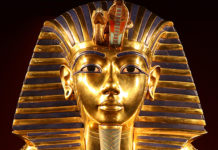Civilisations do not spring up out of nowhere. They go through a number of stages before reaching their fully developed form.
Civilisations evolve similar to how the people who form them evolve. There are series of stages that civilisations go through to become a fully evolved, organised civilisation. These stages are called Pre-State societies because they lack the structure and permanence of a state level society. Archaeologists separate these states of civilisation evolution into three stages, with the final stage being a fully built civilisation, with all the traits that can make it recognised as such.
The First Stage of Civilisation Development: Bands
Living within a band is the first basic stage that humans go through on the step towards civilisation. Our primitive ancestors lived within a band, and it was the only way of life on offer until the development of agriculture. A band level society is made up of less than 100 people, who live by constantly travelling and taking what they need from the landscape. They have no permanent settlement and camps are abandoned when lack of food or a change in weather makes a further stay unsuitable for continued survival. They worship the trees, water and sky, that surrounds them on day to day life. Everything has a spirit, some evil and some benign. Ritual action to appease the spirits was the job of the Shaman.
The Second Stage of Civilisation: The Tribe
The tribe is able to support up to about four thousand people, due to settled communities and agriculture. It is usually made up of a few villages, which have a common interest due to their ancestry or religion. Warfare is common between tribes, because of competition for land to grow food. Religion is very ritualistic in a tribe and the rituals tend to follow the seasonal aspect of agriculture. Elder people are respected for their knowledge and are often the ritualistic leaders in a tribe.
The Third Stage of Civilisation: Chiefdom
Chiefdoms can have up to 20’000 people, all organised under a single leader. This leader is often of ritualistic importance and as a personality is strong and charismatic. Society begins to split into groups according to social status. Relatives of the chief have more power in the society than others. It is during this stage that an upper class begins to form and specialised craftsman begin to appear. A larger workforce and a greater organisation under one leader allow great structures to be built, which are usually of ritual significance.
A Fully Formed Civilisation
Ancient Egypt, Rome and Mesopotamia are just some of the societies that made it to a fully formed civilisation. A fully formed civilisation has large cities, reliant on rural areas for food. They are ruled over a single king, who like a chief has great ritual purpose and may even be viewed as a god. He rules over great armies which protect the civilisations borders and which the king uses to attack surrounding weaker civilisations for land, power and resources. Social stratification occurs with the king up the top and peasants at the bottom.
Source:
- Fagan.B, 2009, People of The Earth: An Introduction to World Prehistory, DK Education








